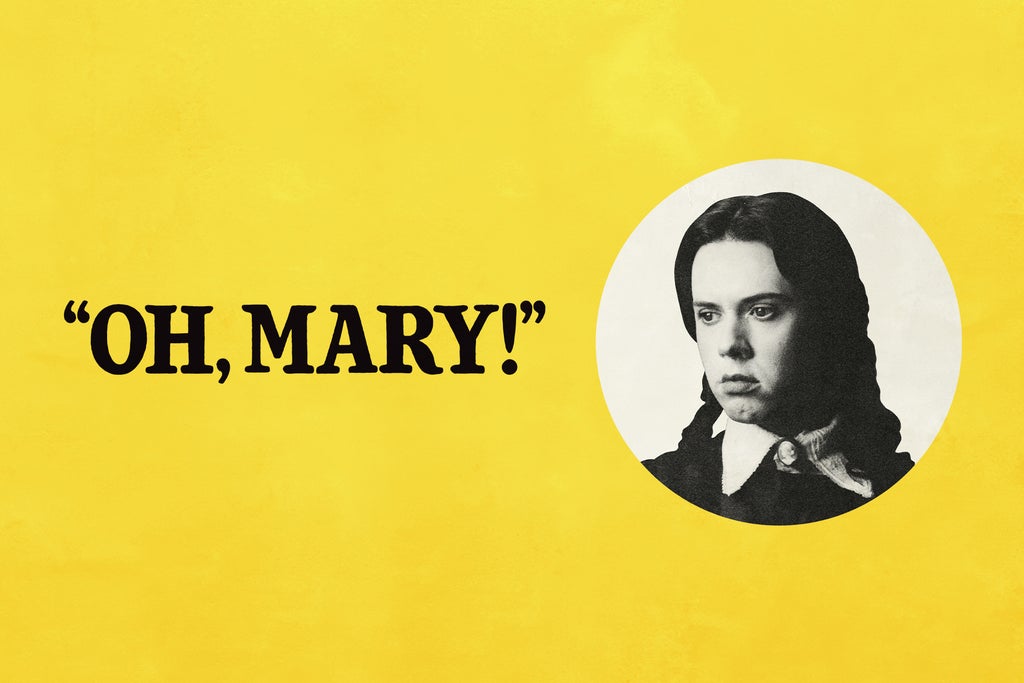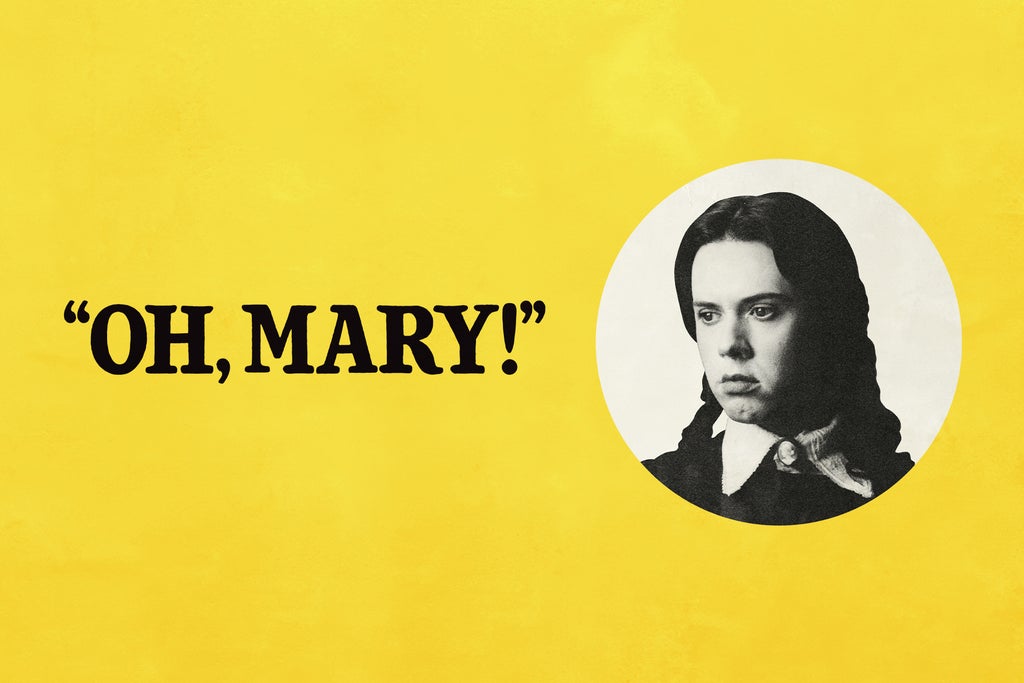Broadway By Design: OH, MARY!
Oh, Mary! is running on Broadway at the Lyceum Theatre.
In Broadway by Design, BroadwayWorld is shining a spotlight on the stellar designs of this Broadway season, show by show. Today, we continue with the creatives from Oh, Mary!- Scenic Designer dots, Lighting Designer Cha See, Costume Designer Holly Pierson, and Wig Designer Leah Loukas.
Oh, Mary! stars Escola as a miserable, suffocated Mary Todd Lincoln in the weeks leading up to Abraham Lincoln’s assassination. Unrequited yearning, alcoholism and suppressed desires abound in this one act play that finally examines the forgotten life and dreams of Mrs. Lincoln through the lens of an idiot (Cole Escola).
Where did the design process begin? dots started with the script. "Our biggest inspiration for the design of this project was Cole's script," they explained. "After calming down from screaming with laughter the first time we read it we realized that everything we needed to know about the tone of the show was embedded in the text, which apart from being totally unhinged and completely stupid is also a really fantastic play with a really compelling dramatic arc.
"Cole had even drawn little thumbnail sketches for each scene - which were by no means a dictation about what the set should look like, but more a provocation as to how the set should look and feel - that is, like a really earnest attempt at a pretty basic period set."

"We'd learned from working on self-aware comedies in the past that the best way to make humor resonate through the set was to understand the jokes, internalize them and then switch from treating the design as a joke itself to taking the design incredibly seriously. We had several conversations with Sam Pinkleton about being really rigorous about being really stupid - an attitude that we particularly love and really took to heart when approaching the design of the show. Therefore, we really leaned into all of the 'set design faux-pas' that we tend to avoid usually - angled walls that address the presentational nature of the theater as opposed to the real shape of a room, seams in walls, flat painted book spines, black voids outside windows and through doors.

"We really delighted in all of it! Embracing the 'bad scenery' quality for the office, saloon and Ford's Theater really allowed us to take a radical departure from that for the finale, where we wanted the set to transform from intentionally 'bad' to intentionally fabulous - really allowing Mary to luxuriate in the fantasy of her Cabaret act."
 Lighting designer Cha See drew inspiration from Disney. "The biggest inspiration for me is Hello, Dolly! and Disney World’s Epcot. It inspired the biggest fairytale of Mary’s life and contrasting to Mary’s reality in the Office," she explained.
Lighting designer Cha See drew inspiration from Disney. "The biggest inspiration for me is Hello, Dolly! and Disney World’s Epcot. It inspired the biggest fairytale of Mary’s life and contrasting to Mary’s reality in the Office," she explained.
Pierson began with Cole's vision. "For Mary, a lot of things were conceived by Cole, they had very specific ideas for her now iconic looks. Making those ideas come to life and compatible with the choreographic staging was and remains a challenge. The design for all of the characters is inspired by a regional theater gaze, something that looks like it's (mostly) researched and re-worked from the old costume stock at that regional theater.
"For the Broadway version of the costumes, almost everything was rebuilt from scratch and while we took certain items up a notch and pushed the comedic elements that the period clothing provides, we tried to retain that sense of scrappy-ness in the new costumes while giving the actors more quality and reliability."


Mary's iconic bratty curls are the work of wig designer Leah Loukas. "We used several research pictures and ideas for the inspiration," she said. "It took time and trial and error, to land on where we are today. But she has a little bit of everyone in her."
The designs came with challenges too. "Finding the right balance of form and function [was a challenge]," added Loukas. "The wig needs to be light weight but secure, bouncy but controlled curls, severe while still being soft. And once we found that balance, the challenge was how to maintain it 8 shows a week!"
![]()
See found her biggest challenges in balance. "Balancing the story of Mary... to create a graph that leads to the love scene is pretty much where we all focused as a team. The everyday life of Mary needs to be bright and boring and we as audience members have to see it- the mundane and the banal. This will serve me later to contrast the moment when Mary finally experiences love at first sight. Will the angle of lighting still be balanced when Mary sees her true love?
"And balancing the surrender to the comedy and the seriousness of the story. My goal is to cater to the storytelling and let the lighting be a supporting role for Mary and the art of the comedy. Helping the pace of the scene with the quickest blackouts that time with the texts and the action on stage to get the laughter is important but at the same time telling a very serious story."

Pierson struggled most with the movement demanded of the actors. "The costumes (and the actors) really go through a lot- it's been tough to make sure the costumes are comfortable, lightweight, and functional while maintaining the silhouettes of the period and mostly, not fall apart."
"We really did have to go through a period of unlearning our usual approach to design in order to embrace what we would usually consider kind of bad design," added dots. "No glass in the windows? No right angled corners? Seeing the tops of scenic walls? There were many times when the design team would look at each other and ask: 'People will know this is a joke right? Will we ever work again!?'

"Apart from that, the biggest challenge was figuring out how to fit and execute the many set changes that occur in quick-fire succession toward the end of the show. Especially at the Lortel, with its shallow depth and no wings, figuring out how the pieces all fit together was a really complex and satisfying puzzle. Thankfully we could look to countless delightful productions of old to find the answers - which mostly relied on the skill and talent of an incredible stage management team and crew.
"Of course, when moving to Broadway the challenges become inverted, where previously we could solve problems with people's hands the cost of Labor became prohibitive in terms of doing things exactly the way we had done downtown, so some rethinking was required in order to execute the changes within the limitations of Broadway labor etc."
Oh, Mary! is running on Broadway at the Lyceum Theatre.








